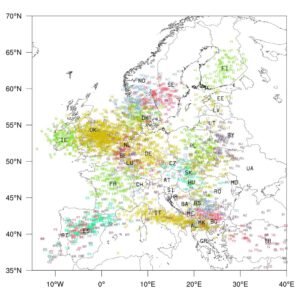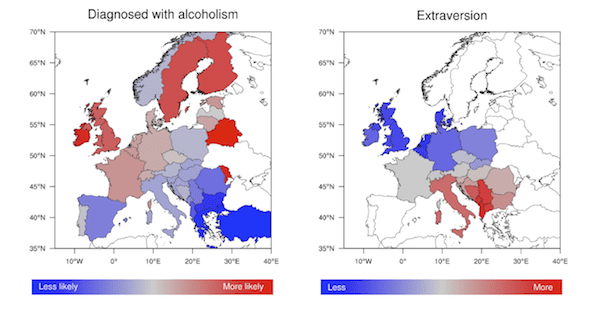
All the drama in the European Union right now – the debt crisis, the North-South divide and the kvetching over the wisdom of a common currency – has reignited talk about the cultural divide between people on the continent.
But is the divide more than a political and cultural one?
Differences in European Traits
Is there a deeper difference among the people of Europe or those of European ancestry than whether Germans have a firmer handshake or are more punctual, or which nationality prefers a kielbasa to köttbullar?
There may be, and those differences can be seen in people’s DNA.
Although all humans are over 99 percent identical genetically, even in the tight geographic confines of Europe there is enough genetic variation that 23andMe researchers can use it to determine from where in Europe a person, or a person’s ancestors, came.
Clusters of Traits
Using principal component analysis (PCA) and linear regression – statistical tools for processing and visualizing large, complex datasets – researchers at 23andMe analyzed genetic data from 3,000 customers who all had four grandparents from the same country of origin.
When the results of the analysis are plotted on a two-dimensional graph, individuals of similar ancestry cluster together, and those clusters correspond closely to the geographic locations of the countries of Europe. Researchers at UCLA and the University of Chicago have found similar results.
Genetic Characteristics
In that research and the work at 23andMe the clustering shows that populations within Europe have evolved distinct genetic characteristics. Another team took a similar approach to map the genetic differences in East Asia.
This is more than just a parlor trick for data scientists. These maps illustrate that Europeans and people of European ancestry are not homogenous but are in fact they are genetically diverse. Those differences also manifest themselves in other ways – from physical traits such as eye color, to propensities toward certain diseases, and even social and cultural characteristics.
Northern European Ancestry
By comparing the ancestry inferred from their genetics to survey responses, 23andMe scientists have identified a number of physical traits associated with a person’s ancestral origin in Europe. In some cases what researchers found is very intuitive – people with Northern European ancestry are more likely to have blue eyes and blond hair, while the hair and eyes of people with Southern European ancestry are more likely brown.
Other associations were more surprising. For instance, 23andMe researchers found that a number of social and cultural traits were strongly associated with a person’s predicted genetic ancestry of origin in Europe.
A self-reported diagnosis of alcoholism was more common than average among people of predicted Irish ancestry for instance, while people with predicted Balkan ancestry were more likely to describe themselves as extraverts.

Parkinson’s Risk
And then there were more serious associations between predicted genetic ancestry and certain diseases. Using data from thousands of 23andMe customers of European descent, our researchers found that ancestry may be important in determining the risks for Parkinson’s disease and for basal cell carcinoma, the most common type of skin cancer.
Among 23andMe customers with European ancestry our researchers found that those diseases were more common among those with ancestry from western and northwestern countries in Europe.
All of these associations and others that we found beg many questions. First, do they reflect actual traits among people of different European ancestry or are they simply a reflection of cultural stereotypes among 23andMe customers?
More intriguing is the question of the extent to which these traits are truly influenced by genetics.
While the statistical correlations in the data are strong, we still don’t have a complete picture of why these traits appear to separate according to ancestry. Associations, of course, do not imply causation, so what exactly is going on biologically remains an open question.
See our gallery of Research Findings for PCA plots of ancestry and eye color, socio-cultural traits, and disease risk in Europeans.



